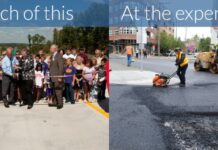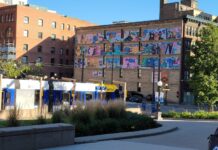ITDP Mexico’s 2025 Ciclociudades Monitor Assesses Cycling Across Latin America
Since 2011, Ciclociudades has been a key initiative of ITDP Mexico to measure the progress of cycling mobility across cities — originally focused on...
In Brazil, This Project is Improving Public Transport with Data and Technology
The impacts of urban passenger transport are not just a growing concern in Brazil, but an increasingly problematic source of GHG emissions, responsible for...
Brazil is Primed to Electrify a Huge Number of Public Buses By 2030
Ahead of COP30 in Belém, Brazil, at the end of 2025, it is essential to elevate the discussion on energy transitions and see more...
Digitalization in Public Transport: Lessons from Mexico’s Cities
Digitalization in public transport (DTP) refers to the use of technologies across the entire value chain of mobility, from planning and operations to user...
CyclingMAX and the Case for Active Mobility
As cities around the world face growing traffic congestion, rising emissions, and strained transport budgets, the case for investing in cycling and walking infrastructure...
ITDP at 40: A Conversation on Four Decades of Sustainable Transport
2025 marks the 40th anniversary of ITDP. It’s a time to reflect on our journey from grassroots activism to global influence, and to look...
Exploring the Possibilities of BRT with ITDP’s SCOPE Web Tool
In February, the 2025 Sustainable Transport Award was given to Dakar, Senegal, with an honorable mention for Mexico City, for their world-class bus rapid...
What Brazil Needs to Do to Improve Its Regulation of Public Transport
Comprehensive and considered public transport regulation is essential to ensuring the quality, accessibility, and sustainability of bus systems, especially in large metropolitan areas in...
This Indian City Proves Walkable Infrastructure Has Big Climate and Health Benefits
Between 2013 and 2019, the city of Chennai, India designed and built footpaths on more than 100 kilometers of streets. Using data collected in...
Visualizing Urban Accessibility in Mexico and Beyond
As part of ITDP Mexico’s Ideamos program, which focused on implementing innovative mobility-related pilot projects, a data-driven visualizer tool was developed to highlight accessibility...










